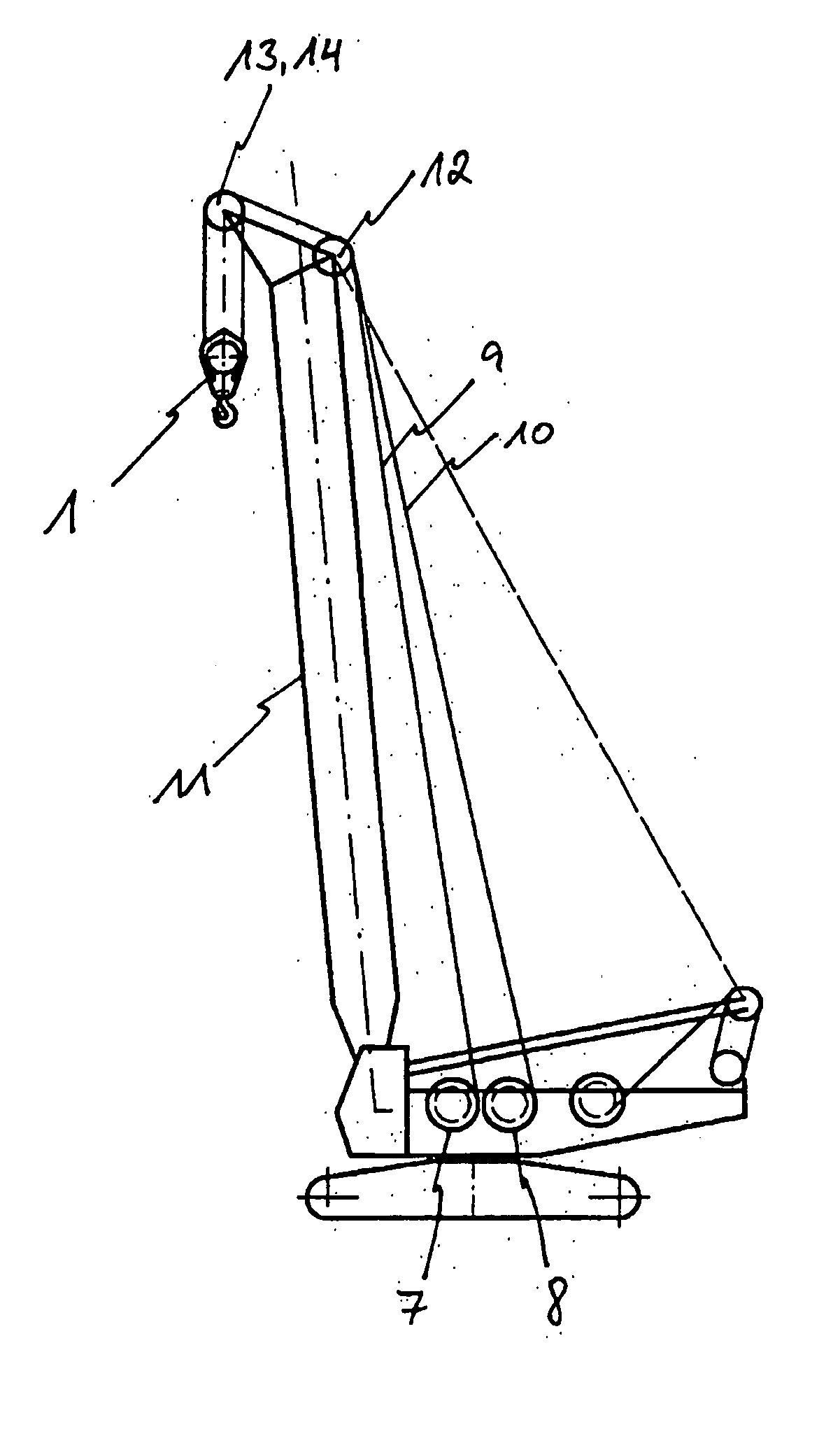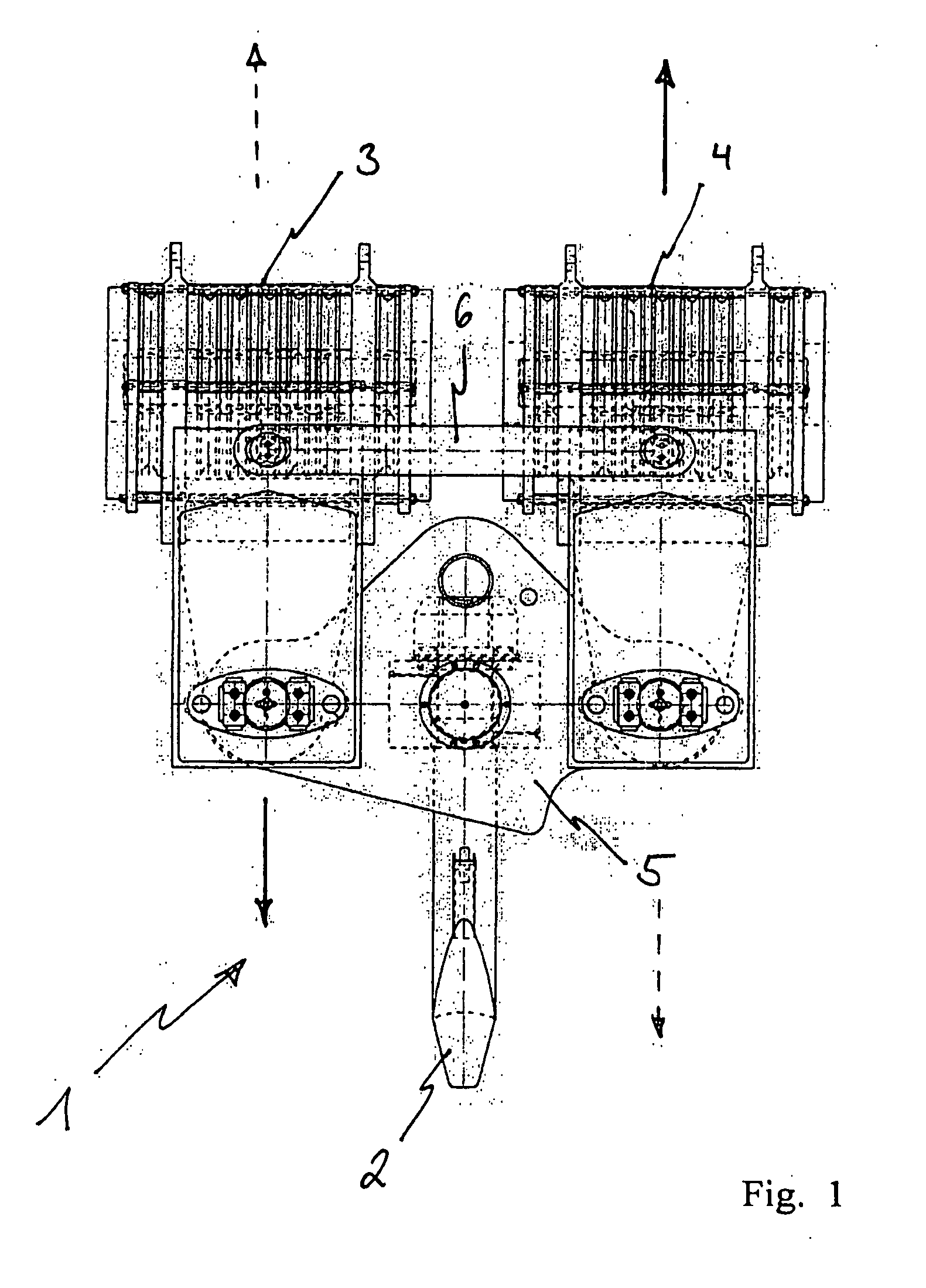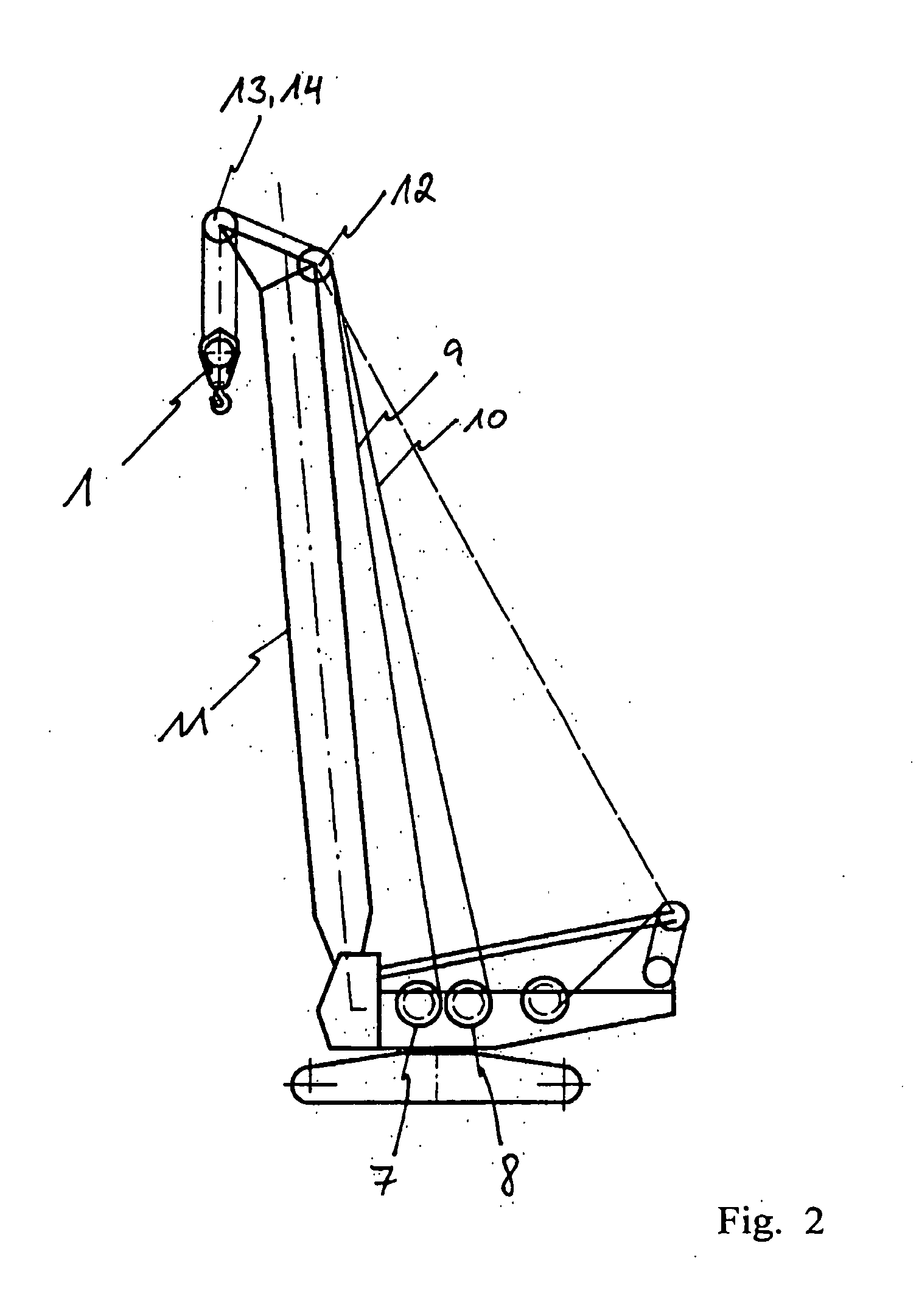Hoisting-Cable Drive Comprising a Single Bottom-Hook Block and Two Winches
a technology of hoisting cable and bottom-hook block, which is applied in the direction of hoisting equipment, load-engaging elements, transportation and packaging, etc., can solve the problems of difficult handling and high rigidity
- Summary
- Abstract
- Description
- Claims
- Application Information
AI Technical Summary
Benefits of technology
Problems solved by technology
Method used
Image
Examples
Embodiment Construction
[0065]FIG. 1 shows a front view of a known double bottom-hook block 1. The double bottom-hook block 1, which is a snatch block comprising a hook 2, essentially comprises two sheave sets 2, 4, each of which in turn comprises several pulleys. The two sheave sets 3, 4 are mutually connected, so as to hinge, to two pairs of cross arms 5, 6 such that the two sheave sets 3, 4 are in a position to slide relative and parallel to each other in their mutual height position, as indicated by the arrows. As shown in FIG. 1, the construction of such a double bottom-hook block 1 is very complex. Due to the considerable loads that have to be transmitted by the cross arms 6, 5, said cross arms 6, 5 have to be designed so as to be very resistant, as shown in the diagram in particular by the solid design of the lower cross arm 5, thus resulting in enormous component dimensions and thus in considerable overall size of the double bottom-hook block. However, such an enormous design height of the double b...
PUM
 Login to View More
Login to View More Abstract
Description
Claims
Application Information
 Login to View More
Login to View More - R&D
- Intellectual Property
- Life Sciences
- Materials
- Tech Scout
- Unparalleled Data Quality
- Higher Quality Content
- 60% Fewer Hallucinations
Browse by: Latest US Patents, China's latest patents, Technical Efficacy Thesaurus, Application Domain, Technology Topic, Popular Technical Reports.
© 2025 PatSnap. All rights reserved.Legal|Privacy policy|Modern Slavery Act Transparency Statement|Sitemap|About US| Contact US: help@patsnap.com



